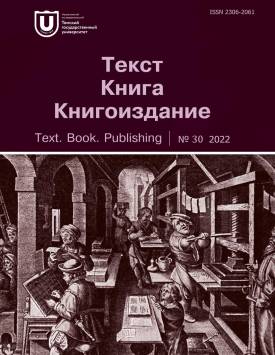“The Snow Queen” with illustrations by Anton Lomaev: The possibilities of a creolized text
In the 21st century, scholars are exploring book illustration not so much as one of the important components of a book, but as the basis of a book. In the newest culture, an attitude has been formed towards non-verbal signs of the text as the main, primary language addressed to the reader. The individuality of the artist is manifested in the fact that the same story, illustrated by different people, can become for the reader a new version of a single literary invariant. At the same time, a deep reception of an illustration requires visual literacy from the reader. The task is to overcome too simple, literal reading of the picture and isolate adequate meanings from the whole wealth of general cultural and personal experience, confirmed by the system of visual images. Many artists illustrated the fairy tale “The Snow Queen” by Hans Christian Andersen. An illustrator from St. Petersburg, Anton Lomaev (Loreta Publishing House, 2021), offered a modernized version of the fairy tale plot in illustration. The methods of visual semiotics help to interpret the signs and images of the creolized text of this book. Lomaev concretizes the conditional chronotope of Andersen’s fairy tale and transfers the plot to Europe of the 20th century. The main color in the book is blue. This color has complex semantics. On the one hand, in the fairy tale about the Snow Queen, it is the color of the Queen herself: snow, cold, ice fragments, lifelessness. Therefore, the influence of blue increases in those parts of the book where the mortal plot is more pronounced: the world of the evil troll (the beginning of the first chapter) and the world of the Snow Queen are made in blue tones. In general, the colors are in cold blue tones if the world is hostile and alien to the characters, and in warm restrained sepia tones if the space of home is depicted. On the other hand, in the world of the Snow Queen, cold is not only a physical phenomenon, but also a world of abstract rationality. The main conflict of the tale of Andersen, a deeply religious author, is the conflict between the spirit and the mind. Lomaev gives this conflict an additional perspective. The artist actualizes the change of thinking in the 20th century, from the patriarchal, organically combining spiritual and intellectual values, to the time of practical rationality, devoid of a spiritual beginning. Lomaev’s illustrations include many items of transport and military symbols (the figure of a soldier, a military uniform, cannons, a drum, aircraft, anti-tank hedgehogs, a military cruiser). Transport and signs of war are the leitmotifs that organize the illustrative series of the book, making the fairy tale plot more documentary, realistic, and tense. Thanks to the symbolic row, the artist clearly associates the Snow Queen’s palace with fascism. The illustrator’s intention is to point out that no social power is eternal. The artist makes the conflict of the fairy tale more universal, opposing the coldness of impersonal power to the warm tones of home: the image of a family, a small town, a familiar lived-in space. The author declares no conflicts of interests.
Keywords
book illustration, creolized text, Anton Lomaev, Hans Christian Andersen, modernization, “The Snow Queen”, semiotic analysisAuthors
| Name | Organization | |
| Gubaidullina Anastasiia N. | Tomsk State University | gubgub@mail.ru |
References

“The Snow Queen” with illustrations by Anton Lomaev: The possibilities of a creolized text | Tekst. Kniga. Knigoizdanie - Text. Book. Publishing. 2022. № 30. DOI: 10.17223/23062061/30/7
